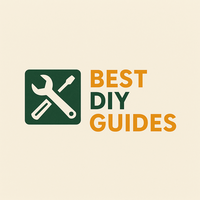Is your pantry a chaotic abyss of mismatched cans and forgotten snacks? Do you dream of a beautifully organized space where everything has its place? Floating shelves are the answer! They're stylish, functional, and surprisingly easy to build yourself. Plus, keeping pet food and treats on higher shelves ensures your furry friends won't be tempted to sneak a snack. Let's dive in!
Planning Your Pantry Shelves
Before you grab your tools, careful planning is essential. This ensures your shelves fit perfectly and support the weight you need.
Measure Your Space
- Width: Measure the width of your pantry walls where you want to install the shelves. This will determine the maximum length of your shelves.
- Depth: Decide how deep you want your shelves to be. A depth of 10-12 inches is usually sufficient for most pantry items. Keep in mind deeper shelves can be harder to reach in the back.
- Height: Determine the spacing between your shelves. Consider the height of the items you plan to store, such as tall cereal boxes or large jars.
Choose Your Materials
- Wood: Select a sturdy wood like pine, poplar, or plywood. Pine is a budget-friendly option, while poplar offers a smoother surface for painting. Plywood is stable and less likely to warp.
- Shelf Supports: The hidden brackets are key! Heavy-duty floating shelf brackets are a must. Look for brackets that can support the weight you plan to store. Consider the length of the metal support rods, as this dictates how far into the shelf they will go, and impacts the load-bearing ability.
- Hardware: Gather screws, a level, a stud finder, and a drill.
- Finishing: Don’t forget sandpaper, paint or stain (if desired), and a sealant to protect the wood.
Safety First!
- Always wear safety glasses when cutting and drilling.
- Use a stud finder to locate wall studs for secure mounting.
- If you're uncomfortable with power tools, ask a friend or family member for help.
Building Your Floating Shelves
Now for the fun part! This section will guide you through the construction process.
Cutting the Wood
- Cut your chosen wood to the desired length and depth using a saw. A circular saw or table saw works best, but a handsaw can be used if you're careful. Accuracy is key.
- Sand the edges of the wood to smooth out any rough spots. This will give your shelves a professional finish and prevent splinters.
Preparing the Shelves
- Drill holes into the back of each shelf to accommodate the floating shelf brackets. The placement of these holes is critical for proper support, so measure carefully!
- Make sure the holes are slightly smaller than the diameter of the bracket rods. This ensures a snug fit.
Finishing the Shelves
- Paint or stain the shelves to your desired color. Apply multiple coats for a durable finish. Consider using a semi-gloss or gloss paint for easy cleaning, especially in a pantry environment where spills are likely.
- Apply a sealant to protect the wood from moisture and stains. This is particularly important if you plan to store food items on the shelves.
Installing Your Floating Shelves
With the shelves built and finished, it's time to install them in your pantry.
Finding the Studs
- Use a stud finder to locate the wall studs. These are the strongest points for mounting your shelves.
- Mark the location of the studs with a pencil.
Mounting the Brackets
- Position the floating shelf brackets on the wall, aligning them with the studs.
- Use screws to attach the brackets to the wall. Ensure the screws are long enough to penetrate deeply into the studs for maximum support.
- Use a level to make sure the brackets are perfectly horizontal. This is crucial for ensuring your shelves are stable and prevent items from sliding off.
Attaching the Shelves
- Carefully slide the shelves onto the brackets, ensuring they are fully seated. The brackets should fit snugly into the pre-drilled holes.
- Once the shelves are in place, double-check that they are level and secure.
Weight Considerations
- Don't overload your shelves! Distribute the weight evenly to prevent sagging or collapse. Heavy items should be placed closer to the brackets.
- Test the shelves by placing a few heavy items on them and observing their stability. If they seem unstable, consider adding additional support.
Congratulations! You've just built and installed your own floating shelves. Enjoy your newly organized and stylish pantry!

